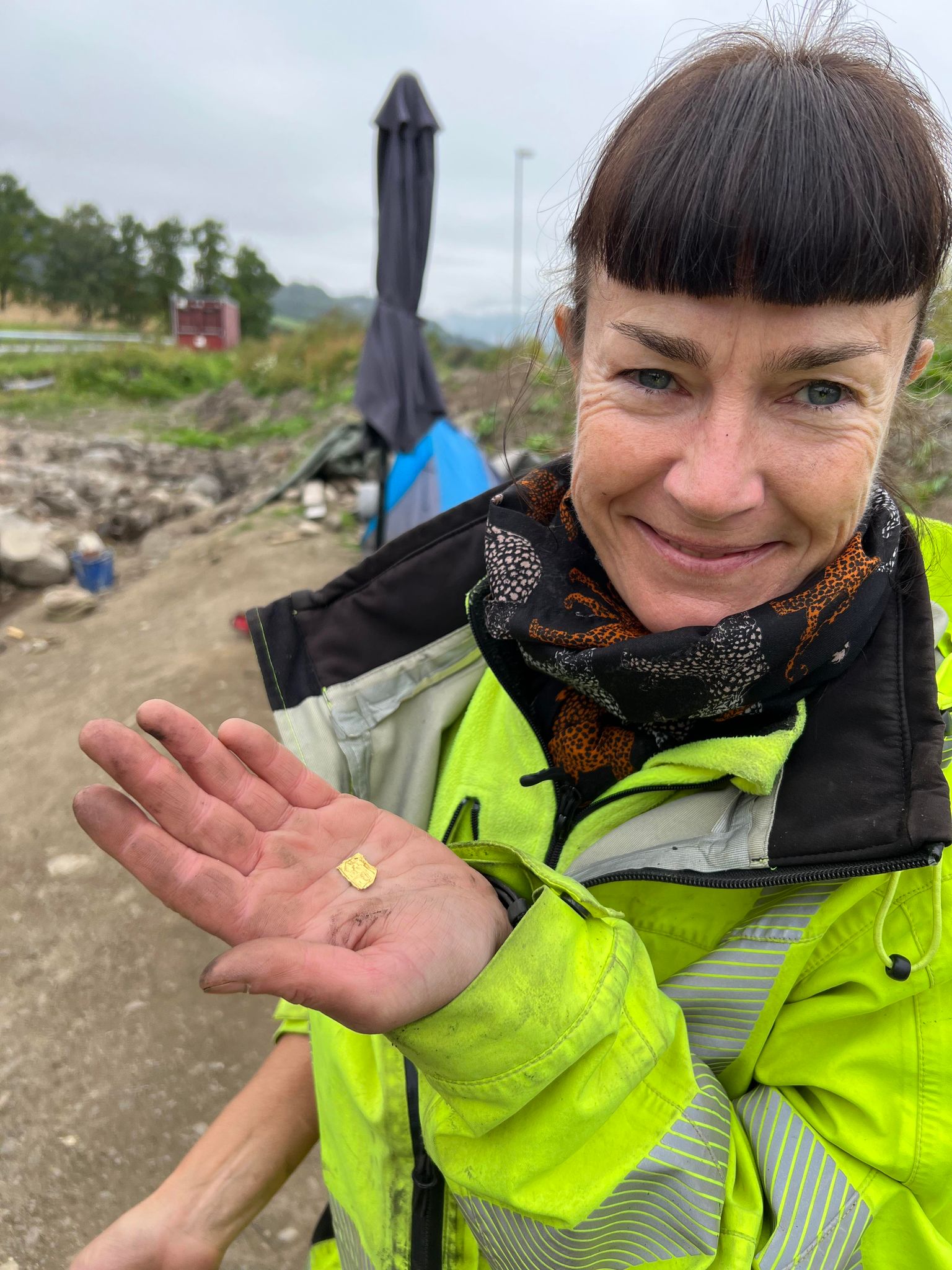To snad dělali pod mikroskopem... 😁
Jsou krásný 👍 ale jak to dokázali, takhle mrňavý...
Early medieval, paper-thin gold plates from the Merovingian period
Categories: Nálezy nejenom s detektorem ve Skandinávii
Five golden, paper-thin Merovingian square plates the size of a fingernail were discovered in Vingrom near Lillehammer, Norway. They show detailed figures of women and men in elegant dress. Dating from between 550 and 793, their discovery is leading experts to new insights into their purpose.
The excavations are taking place around the E6 motorway. Earlier, a smaller survey revealed 30 gold plates, which archaeologists believethat they were associated with the Temple of the Judgement of God, an ancient place of worship first discovered in 1993. Because the structure was only half the size of residential longhouses, archaeologists believe it was used purely for ritual purposes. Only a select social elite were allowed inside.
There are only about 10 known temple sites in Norway where similar gold plates have been found. Among the most famous are the discovery of 19 pieces under the Møre Church in Nord-Trøndelag and five on the excavation of a building at Borg Vestvøgøy in Nordland. In nearby Mjøsregionen, two were found at Åker in 2016. However, the thirty pieces at one site is the largest assemblage of gold plates of this type to date.
The team therefore did not expect to find five more in the new excavation. The newly discovered gold plates are also exceptional because they were found in the original context of the building. Three lay in the site of the former temple wall, two in postholes. This is the first time that archaeologists have been able to link the gold plates directly to the construction of the building - they were inserted into the foundations before the walls and stakes were built, probably to support the roof.
Although the plates are thin and tiny, their motifs show rich detail. Usually a woman on the left wearing a dress, sometimes with a hood or cloak; a man on the right with a shorter skirt, sometimes also with a cloak. Some people are adorned with jewellery, have different hairstyles and hold all sorts of things in their hands - often drinking vessels, wands or rings. Sometimes they also show various gestures. They are so detailed and varied that they have become the source of period costume and iconographic studies.
Most male interpretations are of mythical or ritual significance. The motifs of the couples seem to signify the myth of hierogamy, the holy wedding between the god Frøy and the Jotun daughter Gerda. They may have been used as offerings in wedding celebrations or fertility rituals. They can also be interpreted as mythical ancestors or descendants of chiefs and first families. They may then have served as authentications of the power-political claims of the ruling families.
It is not yet known for certain what purpose the plates served. One hypothesis is that they may have been a kind of "entrance fee" for worshippers to the temple, or temple currency - a means of payment in the ritual sphere. However, the tablets discovered beneath the walls suggest that they may have been sacrificial offerings or deposited as a symbol of ritual protection prior to the construction of the temple.
Excavation work continues. Further exploration of the area could shed more light on the function of the gold plates. The remains of the structure will soon be radiocarbon dated, shedding light on the period of the temple site's creation and possibly its demise.
Roman Němec
Sources: thehistoryblog.com, khm.uio.no





The article is included in categories:
- Archive of articles > Archaeology > Finds and rescue research abroad > Nálezy nejenom s detektorem ve Skandinávii
Post
Zas tak malý to neni. Zkus si vzít kus hliníku (kalíšek od svíčky je fajn) a tupý dřívko a nakreslíš to taky.
Spíš to v tý hlíně hledat bude kumšť. Jestli teď musej prosívat všechny ty haldy kolem dálnice.
kdyby raději ukázali druhou stranu......
- áno, je tam místa habaděj, tam se umělec vyřádí - nálezy jsou od centimetru do necelých dvou cm - a je to buď ražený, nebo vytlačený rydlem







